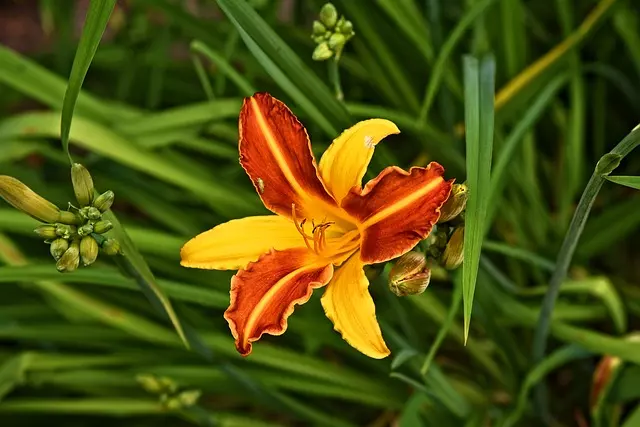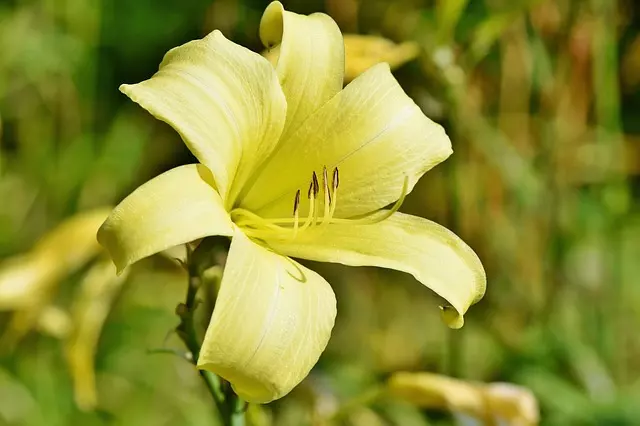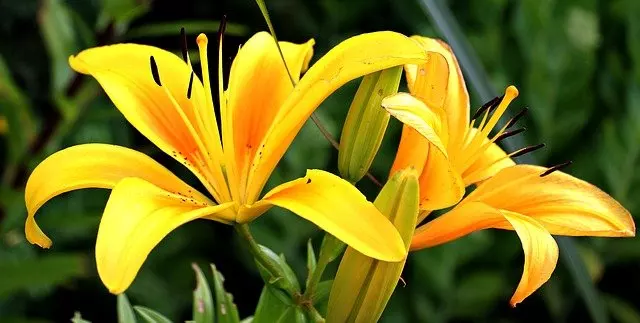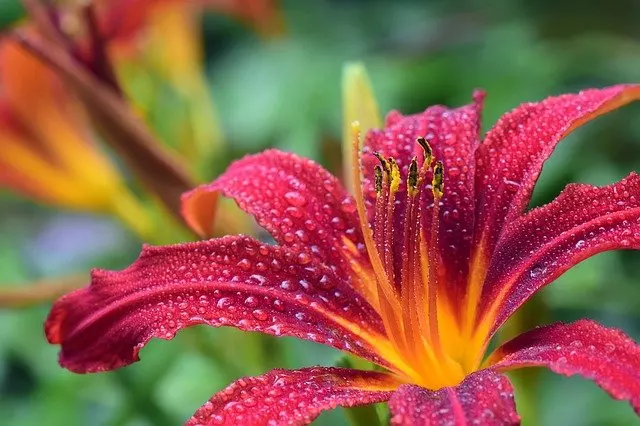Lilies are a type of flower that can usually be seen when the light and warm seasons arrive. They stand out for their colorful colors, shape, and even for their symbolism! This article is designed to learn how to care for lilies and plant them.
There are many types of lilies, although the most common is the purple one. Also popular are those with blue or white petals. Be that as it may, this type of flower, generally large, is usually the one that stands out most in a garden because of its beauty and the attraction it gives off.
Lilies can be a good starter option for those who wish to begin creating their garden. In addition, it is showy enough to evidence whether or not the care has been adequate. That is why it is a better alternative to more complex and delicate plants that require more experience, material, and resources.
Table of Contents
Tips To Keep in Mind on How to Plant Lilies
Very repeated advice on how to plant lilies is that it is not recommended to plant them next to other types of flowers because they already require a lot of nutrients. There is also another reason, and that is that if there are other types of taller and larger plants nearby, they can cover them and deprive them of the light they need to bloom. So, it is better to allocate a part of the land only to the lilies.
Choose a Suitable Variety
Generally, this plant can adapt very well to any climate, however, another tip on how to plant lilies is that some are better suited to certain climatic conditions. Here are a few varieties:
Siberian: This type of lily is native to central and eastern Europe. This species is best suited to different conditions and is very easy to care for. They are ideal for temperate climates.
Louisiana: It grows in the southeastern United States, but can adapt very well to other weather conditions. You just have to keep in mind that they will not bloom if they are not given the amounts of water during the hottest days.
Barbados: This plant is from central and southern Europe. It adapts very well to areas with intense sunlight.
Here are our recommended sellers of lily bulbs:
Recommended Climate and Lighting for Lilies
If we mentioned before those lilies are common in hot seasons and where there are more hours of light, it is because they need 6 to 8 hours of sun. It can be planted in late summer or early autumn so that the roots can settle thanks to the sunlight during this time and it can survive during the winter.

Soil Type for Lilies
For proper care of lilies, we should give them soil with a neutral to acidic pH of 6.8-7.0. However, some varieties can adapt to slightly alkaline soil. Also, the soil should drain easily and be very organic. A tip on how to plant lilies is that if you notice that the soil is very clayey or hard you can use some leaves, humus, or organic matter to enrich the soil and make it drain easily.
You should be able to measure the pH of your soil with a pH soil meter like the one we have that does not require batteries and has 3 functions in 1 (Order it here).
How to Plant Lilies Step by Step
Undoubtedly the best place to plant your lilies is in your beautiful garden, as these plants can easily propagate. However, before you start planting lilies, you must select very well the place where you are going to plant them since the soil must be easily drained and receive full sun. Then you must loosen 12″ to 16″ (30 to 40 cm) of soil and prepare the soil.
Keep in mind that it is often better to plant the lilies in a planting bed, as it improves the drainage of the soil. Now you should dig a hole until you can insert the rhizome leaving the brown part exposed to the sun and the roots should be buried in the soil. Gently cover the surrounding area and water thoroughly.
If you live in an area with a very hot climate, then you should cover the rhizomes with a 1″ (2.5 cm) layer of soil to prevent the plant from drying out.
Now you should plant the rhizomes leaving a 1-foot (30 cm) space between each plant. This is because lilies are usually clumping flowers and may be forced to compete for nutrients. However, even with this spacing, after a few years, they can become crowded. If this happens you should remove the rhizomes and repot them at a greater distance. You can add a small amount of fertilizer to the soil once the lilies are planted.

How to Plant Lilies in Pots
If you don’t have a garden or live in a place with an unfavorable climate, here we will detail some factors on how to plant lilies in pots. It is essential to look for a pot with well-defined holes that can drain excess water. The pot size should be 12″ (30 cm) and for smaller lilies, 6″ to 8″ (15 to 20 cm) can work.
How to Care for Lilies
Lilies require some care that is very common in other types of plantings. For example, it requires the removal of weeds from its environment. As well as a clean environment and maximum care of the roots.
Once they have already flowered, it is not advisable to cut the leaves, unless they are in an obvious bad state. Dead stems and leaves should be cut back once autumn is over.
During the winter the rhizome and the plant should be protected, especially if you are in an area with a lot of snow during this time. This is especially important if you are in an area with a lot of snow during this time of year, as it can damage the rhizomes. If the winters are not very cold, then you can spread a very thin layer of mulch with pine branches. Do not overdo the mulching at this time, as it can cause increased moisture retention.
If the lily has been exposed to a hard frost you should discard it because it can be a perfect home for insects and their eggs.

Care for Lilies – Watering
During planting, the rhizomes should be watered recurrently, without flooding, but constantly. Once they begin to flower, watering can be reduced.
It will be necessary to value in which zone it is planted, and if it is a dry environment you should water them more assiduously. A good way to know if the soil needs to be watered is to insert your finger and see if the soil is wet or dry.
Care for Lilies – Fertilizer
You should keep the plant fertilized to keep the roots fresh. Avoid using fertilizers rich in nitrogen, as they can cause the plant to rot. You should use general-purpose “5-10-10-10” and “5-10-5” fertilizers. You can also use bone and superphosphate-based nutrients.
For the correct care of the lilies, you should fertilize with a fertilizer that we tested with success on our bulbs (Order it here).
- Organic granular fertilizer; Fast acting bulb fertilizer for tulips, daffodils, lilies and other bulb flowers
- OMRI listed for organic gardening by USDA; Certified organic means no synthetic chemicals
- Contains Jobe’s Biozome.the proprietary microorganism archaea that aggressively breaks down material for faster results
Care for Lilies – Pests or Diseases
This is a plant very prone to be attacked by insects, diseases, and even animals, the most common are:
Larvae, Slugs, and beetles: these feed on the leaves and you can notice their presence due to the small holes in their leaves. You can kill these small insects by using insecticides, preferably organic. Try to eliminate them with essential oils and natural repellents. In more serious cases, use contact and systemic insecticides. You should also coat the soil with a soil insecticide to kill the larvae below the surface.
Fungi: They can affect leaves by causing white spots to appear. These can be caused by excess moisture and heat. Fungi can be eliminated by spraying them weekly with a mixture of water and baking soda.
Rabbits, squirrels, and woodchucks: These animals can eat your plants. If you live in an area heavily populated by these, consider using a wire cage on your lilies.
In any case, if you see a heavily infected lily, you should remove it completely.
We hope that this article on how to care for lilies will be useful and that you will be able to have these beautiful flowers in your garden.






